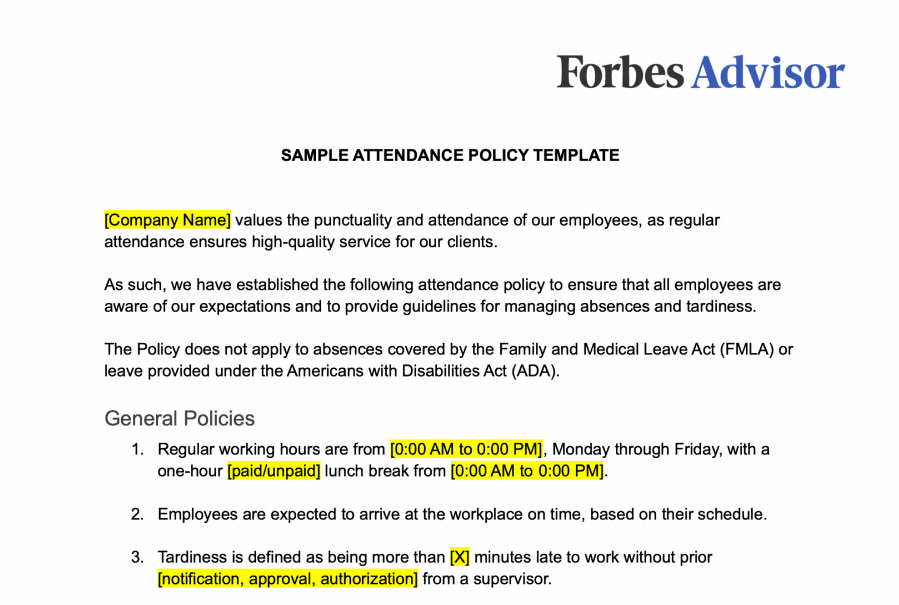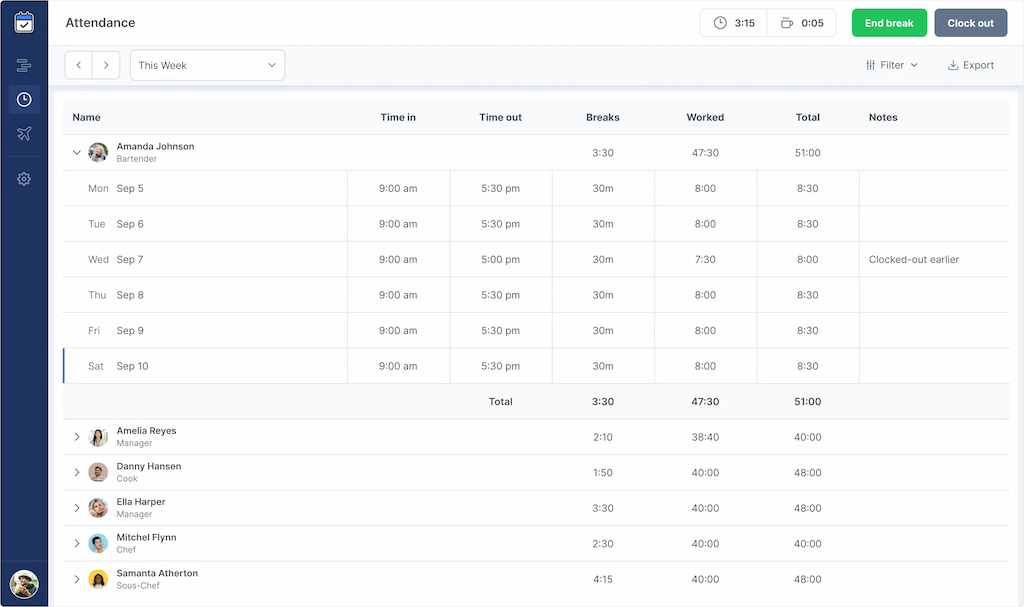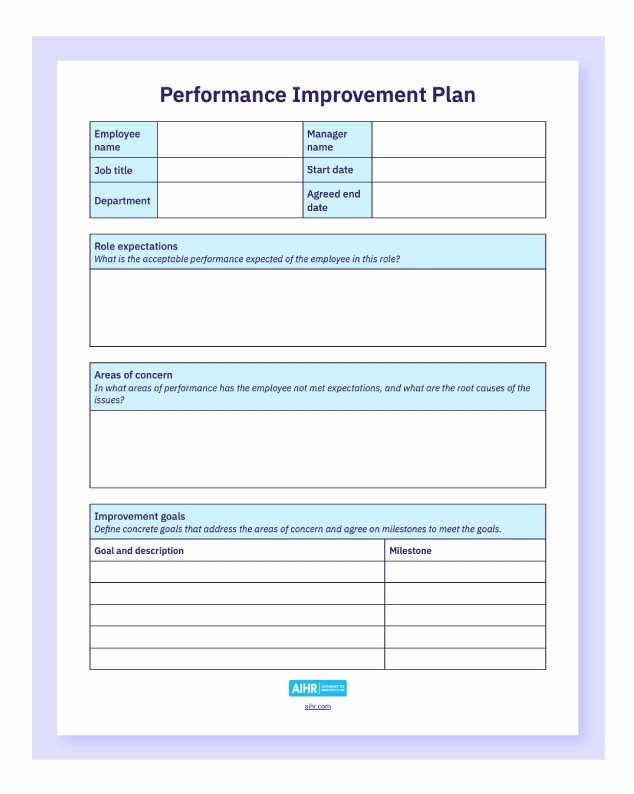Getting late to work happens to everyone, including the best of workers. But what happens when lateness and diminishing attendance become a regular theme? Attendance at work is crucial to any sector and could impact organizations positively or lead to huge productivity losses that ultimately drive up costs and expenses. To this end, attendance software and an attendance policy present a key addition to limiting the implications of absenteeism at the workplace. Such a policy works by documenting some rules or regulations that guide staff behavior and attitude to work. Utilizing the best employee scheduling app can further enhance attendance management, ensuring that all shifts are covered and employee availability is tracked effectively.
With clear attendance and punctuality policies, businesses of all sizes can have employees who are fully aware of their responsibilities and make their shift planning and shift work in general so much easier. This article exposes you to the meaning of attendance policy, the benefits of having one, and more!
What is an Employee Attendance Policy
An employee attendance policy is a set of guidelines governing the presence of employees in the workplace.
The policy ensures that employees learn the importance of reporting to work on time on each working day. How employees internalize these sets of rules is crucial to the process because such policies often influence their morale and determine whether they are treated right.
Further, an employee attendance policy is drafted and documented to guide organizations on matters relating to work attendance and absenteeism. It’s geared towards other incidents as well, including the amount of leave allowed, and other leaves permitted by the employer. The time of arrival, work hours per day, breaks, and other work-related parameters have specific actions that govern them.

In cases of breach by the employee, the actions that apply will be taken, including disciplinary measures for the affected employee. Also called an employee call-out policy, an attendance policy is not only a preventive measure; it’s a tool to build on respect, professionalism, and workplace expectations, and optimize productivity and costs.
Benefits of Having an Attendance Policy
Employee attendance policies hold many benefits and advantages. Some of the most essential benefits are explored here.
💪 Enhanced workplace culture and staff morale
Having a work attendance policy helps you deal with gossip and cliques in the workplace. Moreover, employees appreciate a fair and considerate work environment. Even if there are repercussions for lateness and absences, no one should stand above the rules.
🚀Boosted productivity and efficiency
A clear attendance policy for employees often carries defined rules and expectations. So, employees know when they can be late and absent. They also know when their presence is non-negotiable. As a result, they are less stressed or apprehensive.
📉 Reduced cases of absenteeism
Absenteeism is almost always a never-ending problem that organizations deal with. After setting a company attendance policy for your employees, you’d expect reduced cases of absenteeism.
Absenteeism disrupts workflow and productivity and rubs off on other employees’ morale and attitude to work. That’s why a clear absence policy addresses the act and outlines the consequences for unexcused absences and even excessive leave.
💸 Optimized costs
A time and attendance policy can also do wonders for payroll and cost management. You’ll also solve common payroll issues like misclassifications and underpayments with a precise and transparent policy in place. It helps your employees stay bound by essential principles regarding expense reimbursement, salary determination, resignation, and how the company deals with payroll concerns.
How to Write Up an Employee for Attendance: Best Tips
Written warnings are disciplinary measures that can signal the final straw an employee has before termination. In most cases, such employees have received previous warnings and admonitions about their conduct before they were written up. If you’re wondering how to write up an employee for attendance breaches, below are some of the best tips to consider.
Remain calm and avoid stress
As a manager and leader, it’s easy to feel disappointed and angry at an employee for constantly breaking your attendance rules. However, you shouldn’t write them up when you’re angry or stressed about their behavior. You need a clear head and a good measure of objectivity to document events properly.

Whether you’re following up after verbally addressing your employees, try not to lash out when you write them up. Here are some reasons why you should stay emotionally neutral:
- Being angry could make your actions towards the employee seem personal rather than official or professional.
- Being angry or stressed puts you at risk of making mistakes during the process.
- You could face potential lawsuits for wrongful termination.
Always document your findings
Whether your employees have performed well or poorly, it’s necessary to document their performances and interactions. Doing so will prove beneficial in the long run and offer certain protections, including the following:
- You’ll have solid protection when an employee decides to start a lawsuit against your organization.
- With the document, you can justify every employee’s action, including promotions, suspensions, and even terminations.
- Since proper documentation includes timelines, you can take disciplinary measures in stages.
Remember, stay calm and objective when drawing up documents. Employ dates, times, clear details about your employees, and ensure none of the information is personally motivated.
Let company attendance policies guide you
If there’s an unexcused absence work policy or something related to it, let the rules guide your actions. You can’t go around firing employees for the fun of it. If you don’t like an employee on a personal level, it’s not enough to draw up biased conclusions to have them punished or fired from the job.
Employees can fall short of the company policy and when they do, walk them through the breach and their performance. After that, you can explain why you’ve taken certain actions, especially when such actions are backed by company policies.
For example, your company’s tardiness policy may tolerate a couple of indiscretions from your employees. Beyond that, you can take some disciplinary action against them. Before getting hired, your employees probably agreed to and signed off on the company’s policies. You can refer to the policies when there’s a breach, and even include them in your write-up.
Retain relevant witness statements
Sometimes, other team members raise performance concerns which may involve two or more employees. If that’s the case, include their statements in your write-up. The statements might come in handy later in future disputes and lawsuits. Ensure that witness statements are well-documented and follow relevant guidelines. Your witness statements should be formed along the following parameters:
- Apply the statements in a way that helps build a credible case of continuous behavior before writing up the employee.
- Ensure the statements are based on factual observations and not subjective opinions.
- The statements should come with documented efforts or disciplinary measures by other managers to correct the employee’s continuing behavior.
Meet and deliver the news personally
Instead of meeting with the group or team present, schedule a meeting with the particular employee, and talk things through. If the situation permits, a staff member should be present during the meeting to witness everything.

Take note of the following during the process:
- Explain your concerns to the employee, taking them through instances of poor performance and behavior.
- Ensure your documentation is up-to-date and available at the meeting.
- Always reference the company’s call-out policy since employees often sign off on them before getting hired.
- Outline the steps the employee must take for an effective response to the write-up.
- Ensure the employee confirms receipt of the write-up, and understands its content.
Note that meeting and explaining the content of the write-up may present some problems. For example, your employee may contest certain parts of the document, or refuse to sign it. In that case, experts advise leaving a space in the write-up where they can add comments and signed responses. You can then attach the document to their disciplinary write-up.
Provide opportunities for improvement
A second chance often helps the defaulting employee sit up and get in line. After detailing where their performance lacked and where they have to improve, set guidelines that allow them to improve. There’s an error in everyone, so it’s not enough to point out an employee’s mistake. Build your corrections on the following:
- Ensure that the corrective feedback is honest
- Do not deviate from the issue
- Include steps the employee can take to improve (you may have to consider placing the staff on probation)
- Include possible actions you’ll have to take if the employee doesn’t improve.
Record-keeping and follow-up are important
Ensure you and the employee have records of the signed write-up.
You can add it to their file, which serves as proof that they were written up in line with your company’s absentee policies. Your records will provide the perfect reference for future occurrences, especially if you handled the process correctly. Also, the employee and other interested witnesses are constantly in the loop.
You can choose to observe a probationary period to see if things pick up or remain the same. If they haven’t, a termination of employment is often the last step to adopt.
How to Implement Tardiness Policies
Tardiness is a big deal with all the attendant problems it can cause any organization, including loss of valuable time, low team morale, and high expenses. For these reasons and more, tardiness policies are drafted and implemented to keep everyone in line. Here’s how to implement tardiness policies in your business or organization:
Ensure there’s a lateness policy in place
If you must prevent tardiness, it’s important to create a comprehensive late employees policy. The document will carry clear explanations for punctuality and the consequences of repeated tardiness. Also, the policy should establish a framework for addressing tardiness issues.
Generally, you should communicate this policy to employees, letting them know the implications of breaching it. Also, they should know the importance of punctuality and accountability. Lateness policies create a structure for addressing tardiness. That gives your team more room for productivity and workplace dynamics.
Make the policy consistent
What you need is a policy that is implemented organization-wide, so that all your employees can embrace it. You’ll be creating avoidable problems if some employees are exempted from the policy, while others get affected. Those affected will feel unfairly treated and unhappy, leading to low and negative morale in the team.
While it’s common to have higher-level staff or leadership on slightly different rules, all hourly workers should adhere to a consistent policy. It’s essential to enforce the policy across the board.
Encourage an open communication policy
Sometimes, tardiness is not a product of lazy or carefree attitudes. It goes beyond that and could be the result of issues on the home front, and personal crises. Whatever the cause, you can implement an open communication policy against the backdrop of the existing late policy for employees. That way, they can openly express their thoughts and ideas to one another, and the management.
It’s a bad idea to use any policy as a way to punish your employees for being late. You can do the following to ensure you’re on the right track:
- Identify a pattern with a certain employee and use it to start a conversation.
- Create a comfortable environment where the employee is at ease to communicate.
- If there are serious reasons for their behavior, try to help the employee solve it rather than punish the behavior.
Include the tardiness policy in employee onboarding
Whether you have new employees coming through or not, it’s essential that everyone fully understands the tardiness policy. Always communicate the importance of timekeeping to new and old employees. Onboarding employees is a necessary part of the process, which helps them understand the effects of tardiness and how it affects the company. Further, present the tardiness and call-off policy as a positive for everyone involved. Employees shouldn’t see it as a means to lord it over them.
Consider using special tools
An employee shift scheduling tool can help you implement key policies that combat tardiness at the workplace. The truth is you’ll have a hard time manually checking the clock-in and clock-out sheets, even with dedicated staff. Also, industry experts found that 60% of organizations use monitoring software to track their remote employees.

Consider using a tool or an attendance sheet that automatically takes note of absences, time, and tardiness and helps you track employee patterns. You can also tailor your policies around such tools for effective scheduling and time management.
Introduce a reward and punishment system
There’s more to a tardiness and attendance policy that explains the consequences of employees being late. While it puts them in check, the policy can also carry rewards for good behavior.
Reward employees for being on time and present at their duty posts. Doing so will encourage other employees to sit up and adjust to the rules governing your organization. Employees who consistently obey and follow the policy should qualify for time off, bonuses, and even raises. As we mentioned already, those who show a pattern of tardiness and absenteeism should face the consequences, which may include probation.
Train managers to write up tardy employees
Your managers need to have a comprehensive understanding of the tardiness policy in place. If they don’t, you must train them on the importance of the policy, and how to tackle connected issues. When they know how to implement the policies, they can effectively manage and address employee lateness and absenteeism.
Managers need the skills to handle constructive conversations about punctuality, set clear expectations, enforce policies, and provide guidance to employees.
Use policies to conduct performance reviews
Reviews provide a good way to help your employees stay on track. The reports you generate from the policies will serve as reference points to help you identify those consistent with time, struggling with being early, and other parameters.
You can use the information to conduct performance reviews leading to implementing performance improvement plans.
When you bring up issues related to your absenteeism policy during performance reviews, employees will adjust. They’ll pay more attention to time and won’t want to fall prey to negative rewards.
Conclusion
Attendance policies sound new or foreign to some organizations and managers. However, there’s no better time to implement one for your team of employees. Writing an attendance policy is an effective way to manage issues with absenteeism and tardiness.
You’ll have a healthy workplace culture, better morale, and teams well aware of the expectations management has placed on them. The best policies ultimately lead to employee satisfaction and growth for your company.
Remember, the policies you create should carry everyone along, and include rewards, and means to help employees improve. Get one working for your team now and reap the rewards of a thriving workplace. If you eventually decide to fire an employee, you can go through our offboarding checklist to make the process smoother.
If you’re looking for a seamless way to improve shift planning, Shifts by Everhour is the perfect solution. With features like real-time monitoring, easy scheduling, and mobile accessibility, managing your workforce has never been simpler with this attendance software.
Check out our article on how to write an employee attendance record in Excel!


